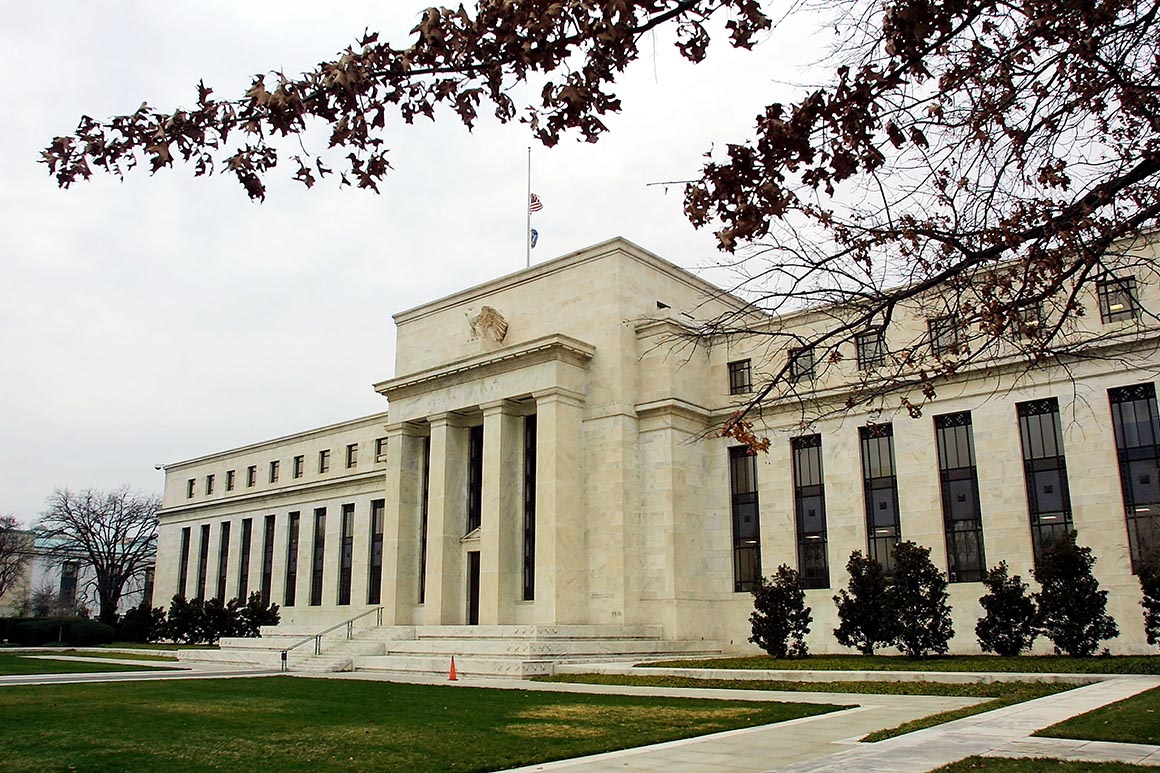
Unlike in the 2008 crisis, when the Fed sparked an outcry for bailing out nonbanks like insurance giant AIG and investment bank Bear Stearns, it now has formal buy-in from the Treasury Department for many of its emergency programs. Thanks to the landmark 2010 Dodd-Frank Act, Treasury Secretary Steven Mnuchin has to authorize the central bank to lend to such non-bank companies in emergencies, and his department has kicked in taxpayer money to cover losses if borrowers default.
The stimulus package that Congress is on the brink of approving will vastly expand the amount of cash available to cushion those losses. But, unlike the controversial 2008 Troubled Asset Relief Program, the scope of lending will be larger than just appropriated funds.
Because Treasury has been supplying 10 percent of the funding for Fed emergency lending programs, $425 billion from Treasury could translate to more than $4 trillion in lending to businesses, consumers, local governments, and money market mutual funds.
“They opened up the channels, and when the Treasury gets more money, they’ll be able to scale up these programs,” former Fed Vice Chairman Donald Kohn said.
But the Fed will still be under a microscope as it implements these programs, especially in lending to large corporations. The central bank, seeking to head off criticism from lawmakers, has already said companies will face restrictions on buying back their own stock — which boosts share prices and disproportionately benefits wealthier stockholders — and on CEO bonuses.
The Fed will also be bringing in private-sector financial firms to help administer the programs, a potential line of attack it could face down the road; the central bank has already hired asset manager BlackRock for that purpose.
Still, the amount of help that is directly targeted at consumers and small businesses will soften the criticism of moves to help larger firms, said Amanda Fischer, a former Democratic congressional aide who now directs policy at the Washington Center for Equitable Growth.
She said the Fed is usually inclined to support markets rather than people directly. “Now we see cracks” in that approach as the central bank broadens its focus to also embrace Main Street, she added.
That’s partly because of the sheer scale of this crisis and pressure it is getting from even Republicans, including Trump, to do more, Fischer said.
Many free-market Republicans, who have balked at the central bank for its large footprint in the past, are sounding a different note now. Prominent GOP lawmakers like Sen. Pat Toomey (R-Pa.) and Rep. Patrick McHenry (R-N.C.) have pushed for the Fed to do more to support businesses during this crisis.
The central bank’s bond holdings are ballooning in the midst of the pandemic, a topic that has also sparked complaints from Republicans in the past. Its massive purchases of Treasury securities and mortgage-backed securities will over the course of a week equal its second round of asset purchases in the wake of the 2008 crisis, which took place over seven months.
That’s part of an effort to keep the key markets for U.S. government debt and mortgages, as well as all the markets that those assets feed into, from freezing up.
All these unprecedented moves could transform how the public views the Fed’s role in downturns, although support for similar actions in the future “will depend a lot on where the crisis begins and who’s paying the price,” said Kohn, the former Fed official.
Bair said conversations about the Fed’s role should be put on hold in recognition of just how broad the economic damage could be. She added that because the Fed prints money and controls the rails of the payments system, using it as a medium for bolstering the economy is the quickest option.
“They’re a very efficient transmission mechanism,” she said of the central bank. “If you think of them as more of administrators as opposed to a piggy bank, that might be a better way of looking at it.”
Still, there are limits to what the Fed can do; one of the ways the central bank has historically sought to protect its authority is by keeping its goals relatively narrow and noncontroversial. For example, it has declined to outright purchase debt from cities and governments.
Glenn Hubbard, dean emeritus at Columbia Business School and former chief economist to President George W. Bush, said Congress needs to act to do its part, including sending money directly to people, which the Fed doesn’t have the authority to do.
As for the Fed’s actions: „Any time you get into something that has any risk, you’re going to have political concerns about the Fed, but the Fed is a lender of last resort,” he said. “It’s the right thing to do.”
Source: politico.com
See more here: news365.stream






